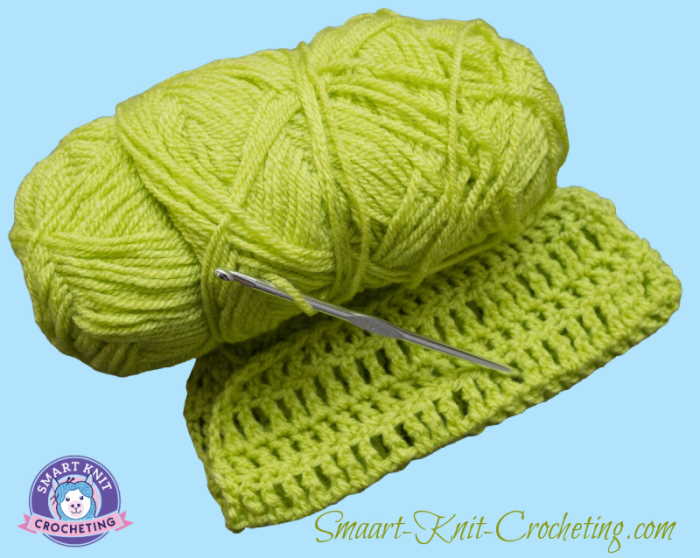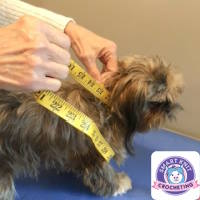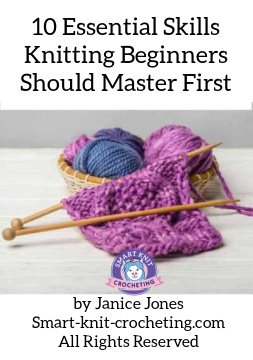- Home
- Knitting Stitches for Beginners
- Knit and Purl Stitches
- Flying Geese Knit Stitch Pattern
- Fisherman's Rib Knit Stitch Pattern
The Fisherman's Rib Knit Stitch Pattern: Tips and Tutorial
Fisherman's Rib Stitch Pattern by Janice Jones
|Updated 01-27-2024
Here is a classic stitch that even beginners can learn quickly. It's versitile and creates a thick, warm fabric perfect for winter garments and accessories such as scarves, mittens, hats, and cowls.
It is created with an easy two row repeat which is easy to memorize and is worked on an odd number of stitches.
In this tutorial, I will guide you through the process of creating the Fisherman's Rib Stitch, including how to make the K1B, (Knit one below), which makes this rib different from the typical 1 x 1 rib pattern.
 Fisherman's Rib Knit Stitch Pattern
Fisherman's Rib Knit Stitch PatternHow to Make the Fisherman's Rib Stitch Pattern
The fisherman's rib stitch is a very simple two-row repeat that also requires a set up row.
It's best made with an odd number of stitches and you can add a selvage stitch at either row if you like.
As is the case with typical rib stitches, patterns often call for using needles a size or two smaller than you will use for the rest of the project.
Skill Level

This is a beginner-friendly stitch.
Abbreviations Used
K - Knit
P - Purl
K1B - Knit one below (more about that in a moment)
CO - Cast On
RS - Right Side
WS - Wrong Side
Pin For Future Reference
Skills Needed for the Fisherman's Rib Knit Stitch Pattern
- Cast on
- Bind off
- Knit
- Purl
- Knit One Below
- Weave in Ends
- Blocking: This is optional, but will give you a more professional finished product.
How to Knit One Below (K1B)

When we create a knit stitch, we usually work into the front loop or leg in the next stitch on the needle, wrap the yarn and pull through.
When we knit one below, instead of inserting the needle into the next loop on the left needle, you insert your right-hand needle into the little eyelet/loop just below the stitch on the needle. Wrap the yarn counter-clockwise as you normally do, pull through and remove the stitch off the left needle.
Supplies
- Your choice of Yarn. I am using a 100% acrylic in a worsted-weight, number #4 CYC.
- Knitting needles: US 7 or (4.5 mm)
- Scissors
- Yarn needle
Directions
CO an odd number of stitches (Optional selvage stitches +2).
For the purposes of this tutorial we will be using the two extra selvage stitches that we will slip at the beginning of each row.
This creates a nice edge stitch which is nice if you are using this stitch to work something such as a scarf where you won't be adding a border or stitching.
For the purposes of this tutorial, I cast on 21 stitches
- Set Up Row: Sl1p wyif, *p1, k1*, p2
- Row 1: (RS): Sl1p wyib, *k1b, p1, repeat from *to last 2 sts, k1b, k1.
- Row 2: (WS): Sl1p wyif, *p1, k1b, repeat from* to last 2 sts, p2.
Repeat Rows 1 and 2 until you have reached your desired length. Bind off in Pattern. Block if desired. Weave in ends.
Possible Problems Associated with the Fisherman's Rib Knit Stitch Pattern
I'm not sure if this is a problem for you, but it has been an ongoing issue for me. That is, poor tension between knit and purl stitches.
We encounter this in ribbing and other stitch patterns where there is a transition between knits and purls, for example the seed stitch and the moss or Irish moss Stitch.
The problem appears as wonky knit stitches between purl stitches, creating a rib that is not what you might like.
According to one of mentors, Arenda Holliday, if we continue the same tension across the row or round, (if working in the round) when switching from knits to purls and back to knits, extra yarn is allowed to accumulate causing the knit stitches to be larger.
Here is a video she made to prevent this in normal ribbing. I think it should work similarily for Fisherman's Rib Knit Stitch.

To prevent the knit stitches from becoming oversized is to reduce the slack of yarn between the knit and purl stitch. So, if you tighten up after each purl stitch, the problem should resolve itself.
Give a little tug to the yarn as you bring it forward to make a purl, then make the purl as normal. See if that works for you.
Frequently Asked Questions About the Fisherman's Rib Stitch Knit Stitch Pattern
Is the Fisherman's Rib Stitch the same as Brioche?
Is the Fisherman's Rib Stitch the same as Brioche?
Fisherman's Rib is similar to Brioche, but it doesn't include slipped stitches and yarn overs. Additionally Brioche is often worked with more than one color and lends itself to increases and decreases. Rather, the Fisherman's rib is worked in the row below and gives the pattern a puffy look.
Does the Fisherman's Rib stitch use more yarn?
Does the Fisherman's Rib stitch use more yarn?
Yes, compared to a stitch such as the Stockinette, or even a simple rib, it does need more yarn.
Can you knit the Fisherman's Rib in the round?
Can you knit the Fisherman's Rib in the round?
Yes, but it is slightly different.
When working in the round, place a stitch marker to show the beginning of the round.
Set-Up Round: *K1, p1; rep from * to end.
Round 1: *K1b; p1; rep from * to end.
Round 2: *K1, p1b; rep from * to end.
Repeat rounds one and two for the pattern.
Note: When purling one below (p1b), the knitting needle will be inserted under the purl bump below the stitch on the needle.
Fisherman's Rib Knit Stitch: Pin for Future Reference
About Janice
Hi, I’m Janice, the voice behind Smart-Knit-Crocheting. I love to knit and crochet and even more, I love teaching others what I know.
Though I learned to knit and crochet as a child, I didn’t get serious about these amazing hobbies until I retired. I’m a certified knit and crochet instructor through the Craft Yarn Council and am working on becoming a Master Hand Knitter through The Knitting Guild Association.
I’m currently living with my husband of over 50 years and our 6 Shih Tzu dogs.
I love hearing from you, so please drop me a line and let me know what you’re working on, whether you love knitting or crocheting more, and if you have any questions. Please visit my about me page for more information.
Happy Crocheting







